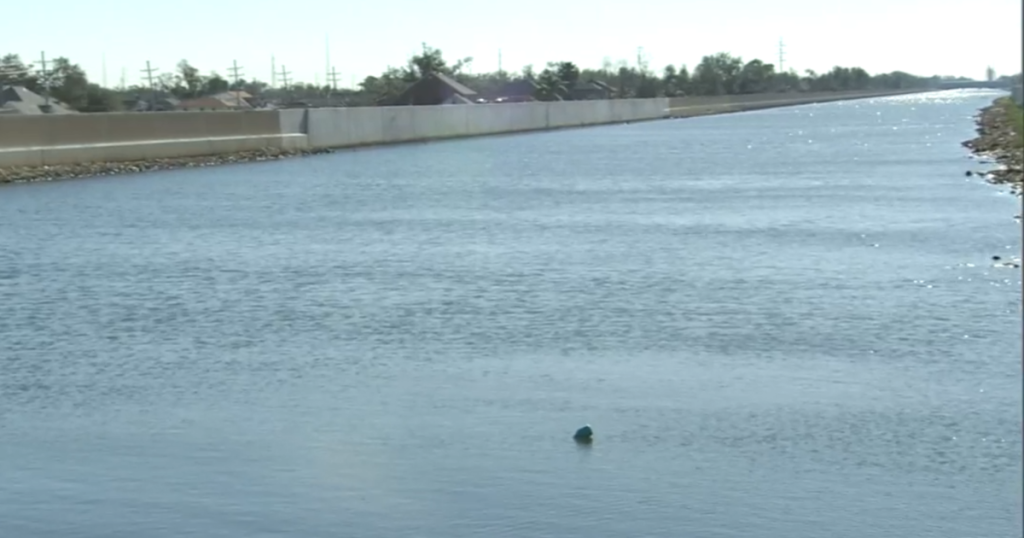As the Atlantic hurricane season begins, a new study from Tulane University highlights alarming findings regarding the effectiveness of New Orleans’ concrete flood walls. These structures, bolstered after Hurricane Katrina, are sinking at rates faster than rising sea levels, potentially jeopardizing the city’s flood defenses. The study’s researchers emphasize the need for careful monitoring and maintenance to avert future risks, as they assess the ongoing vulnerability of various neighborhoods in a city that remains heavily reliant on its flood protection system.
| Article Subheadings |
|---|
| 1) New Orleans’ Flood Wall Vulnerabilities |
| 2) Key Findings from the Study |
| 3) Implications of Sinking Ground Levels |
| 4) Community Concerns and Infrastructure Maintenance |
| 5) Future Recommendations and Potential Solutions |
New Orleans’ Flood Wall Vulnerabilities
New Orleans, situated largely below sea level, remains extraordinarily vulnerable to flooding, particularly as the region enters another hurricane season. Following the devastation caused by Hurricane Katrina in 2005—where over 1,300 lives were lost and more than a million people were displaced—the city invested approximately $15 billion to reinforce its levees and flood protection systems. These concrete flood walls were expected to shield the city from storm surges. Unfortunately, the latest findings reveal that sections of these walls are sinking, raising significant concerns about their long-term effectiveness in safeguarding the city.
Key Findings from the Study
The study, published in the esteemed journal Science Advances, meticulously analyzed satellite radar data from 2002 to 2020 to track changes in ground elevation across Greater New Orleans. It found that, while most areas appear stable, some neighborhoods and wetlands are sinking at alarming rates, averaging more than an inch per year, with certain regions losing up to 47 millimeters—or almost two inches—of elevation annually. Simone Fiaschi, the study’s lead author, emphasized that even minor reductions in elevation can exacerbate flood risks in a city where many areas are critically close to sea level. “These results serve as a wake-up call,” noted Mead Allison, a co-author of the study.
Implications of Sinking Ground Levels
Should these sinking trends continue, the implications could be dire. The study warns that, within the next decade, crucial wetlands east of New Orleans could transition from marshy buffer zones to open water, effectively eliminating essential defenses against storm surges. Such changes would not only put the city at greater risk for flooding but would also have long-lasting effects on the coastal ecosystem and local communities that depend on these natural barriers. The researchers pointed out that industrial sites, including the Louis Armstrong New Orleans International Airport and specific residential areas, are prominently involved in this subsidence, likely due to soil compression and groundwater withdrawal.
Community Concerns and Infrastructure Maintenance
While scientists emphasize the urgency of the situation, some residents have expressed skepticism about the government’s commitment to addressing these issues. For instance, residents in the Michoud neighborhood—one of the areas identified as sinking faster than others—have shown frustration regarding the lack of attention to existing infrastructure problems. Local resident Synthia Viltus voiced her doubts, claiming, “I have zero faith in state federal leaders to keep the levies updated,” as she highlighted ongoing issues such as potholes and deteriorating roads that remain unresolved for extended periods. Such concerns underscore the complexities of maintaining and upgrading critical flood protection infrastructure in a city already grappling with urgent socioeconomic challenges.
Future Recommendations and Potential Solutions
With significant challenges ahead, the study advocates for regular upgrades to New Orleans’ flood protection systems along with continuous satellite monitoring. Researchers believe that understanding specific patterns of land movement is crucial for effective flood defense planning. In statements highlighting the importance of these findings, Simone Fiaschi remarked, “This research shows that land movement isn’t uniform, and understanding these patterns is crucial for protecting lives and property in a city where inches truly matter.” Furthermore, the study’s authors hope their research will serve as a blueprint for other coastal cities grappling with similar issues, demonstrating that ongoing maintenance and upgrades are vital to ensure public safety.
Key Points
| No. | Key Points |
|---|---|
| 1 | New Orleans’ flood walls are sinking faster than sea levels are rising. |
| 2 | The study indicates some areas of the city are experiencing up to 2 inches of elevation loss annually. |
| 3 | The sinking ground levels jeopardize the city’s flood protection capacities. |
| 4 | Many residents express concern over infrastructure maintenance and government commitment. |
| 5 | Researchers recommend ongoing monitoring and system upgrades to protect vulnerable areas. |
Summary
The findings from Tulane University’s recent study underscore critical vulnerabilities in New Orleans’ flood protection systems, especially as the city braces for another hurricane season. With ground levels sinking dramatically in key areas, the potential for increased flooding looms larger than ever. The urgency for regular maintenance, system upgrades, and effective monitoring cannot be overstated, as the combined efforts of local communities, officials, and researchers will be essential to tackle these pressing challenges and safeguard lives and property.
Frequently Asked Questions
Question: What are the main causes behind the sinking of New Orleans’ flood walls?
The sinking is largely attributed to soil compression and groundwater withdrawal, particularly around industrial sites and newer residential developments.
Question: How much investment was made to reinforce New Orleans’ flood protection after Hurricane Katrina?
Approximately $15 billion was invested to enhance the levee and flood protection systems after the devastation caused by Hurricane Katrina.
Question: What do researchers recommend to address the sinking flood walls?
Researchers advocate for ongoing monitoring, regular upgrades to the flood protection systems, and the use of satellite technology to track changes in land elevation.


